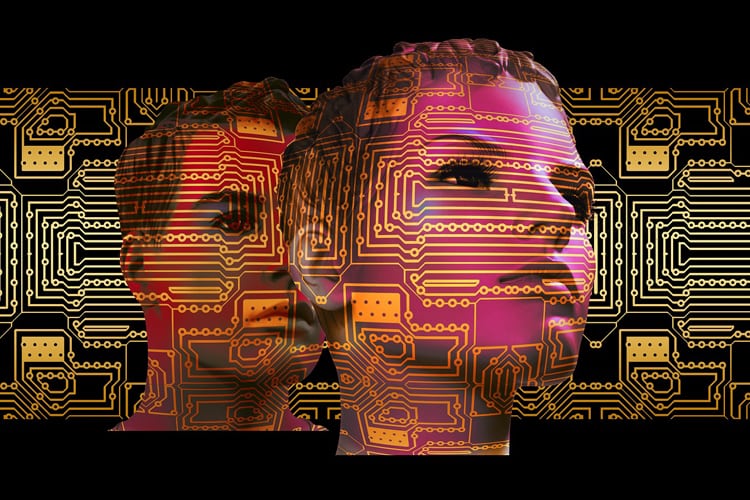As GPT, Claude, Gemini, and other leading models continue to converge in raw intelligence, a new question is beginning to shape the future of artificial intelligence: not just how smart AI can be, but who it becomes in the process.
The next frontier of AI isn’t defined by speed or scale. It’s defined by presence.
Users today expect more than just accurate answers. They’re looking for connection—a consistent voice, a memory that carries over time, and a sense of digital companionship. In this new phase, performance alone isn’t enough. We want AI that feels familiar. That remembers. That returns not just results, but emotional continuity.
One of the clearest signals of this shift came in late 2023, when Meta introduced a set of persona-based AI characters across platforms like Messenger, Instagram, and WhatsApp. Built on the LLaMA model, each assistant came with its own personality, tone, backstory, and even avatar design—ranging from a motivational life coach to a sarcastic gamer friend. Users could chat via text or even interact by voice, creating a more immersive and emotionally present experience. Meta didn’t call them tools. They called them companions.
While these AI personas were still limited by prompt-based customization and shallow memory, they represented a deeper philosophical turn. AI was no longer just a smart function. It was becoming a social presence—something users might grow attached to, trust, and build a relationship with over time.
This shift suggests that the next leap in AI development won’t be measured only in intelligence—but in identity.
LOCAL NEWS: 100 best places to work and live in Arizona for 2025
INDUSTRY INSIGHTS: Want more news like this? Get our free newsletter here
From Prompt to Persona: What AI Still Lacks
Many of today’s AI systems offer a form of instant roleplay. You can ask a chatbot to act like a mentor, a friend, or a fictional character, and for a few exchanges, the illusion holds. But scratch beneath the surface, and the seams show. The character doesn’t remember what you said last week. It forgets your inside jokes. It shifts tone without reason. It has no sense of internal boundaries.
In short, the persona disappears as soon as the conversation ends.
This exposes a fundamental truth: personality in AI requires more than clever prompts or stylistic filters. It requires structure. To build believable and emotionally resilient AI personas, we need four essential pillars:
Memory: the ability to recall context and emotional cues over time
Tone: a consistent voice that doesn’t fluctuate unpredictably
Logic: behavioral responses that follow internal rules and values
Boundaries: ethical limits that guide the character’s actions and protect trust
Without this stack in place, most AI interactions—even those dressed up as personalities—remain shallow simulations. They talk like someone, but they don’t feel like someone.
Big Tech’s Quiet Shift Toward “Persona Interfaces”
Major technology companies have started to invest heavily in this emerging space of emotionally grounded AI. The focus is no longer just on making models smarter—it’s on making them relatable.
Meta’s AI character suite stands out as an early attempt to embed personality into the daily chat experience. Each character is more than a set of responses; it’s an emotional archetype designed for casual companionship. By enabling voice chat and persistent identities across apps, Meta is signaling that the future of AI will be socially embedded, not just functionally available.
Elon Musk’s xAI is similarly exploring the importance of emotional and logical consistency in artificial general intelligence (AGI). Musk has often argued that for AGI to be aligned with human values, it must be trustworthy—not just in factual output, but in behavior and tone. An AI that contradicts itself emotionally from one day to the next would be difficult to rely on, regardless of its IQ.
OpenAI, meanwhile, has rolled out customizable GPTs. These allow users to set tone, style, and role behavior through a set of instructions. But most of these configurations are still prompt-bound and lack persistent memory unless explicitly enabled. This makes for a flexible system, but one that often struggles to maintain emotional coherence across sessions.
Together, these initiatives reveal a common realization: AI is no longer just a utility. It’s becoming a presence. The goal is not just information, but relationship. Whether you’re building a co-writer, a digital therapist, or a roleplay companion, the question is no longer “What can it do?” but “Who is it becoming to you?”
Toward Trustworthy AI
As artificial intelligence becomes more embedded in the emotional texture of daily life, its value may depend less on precision and more on consistency. People don’t necessarily expect AI to be flawless. What they want is familiarity, emotional coherence, and a sense of continuity. They want to feel that the voice they hear today still remembers yesterday.
This growing need for emotional connection has sparked a quiet movement toward identity-first AI. Instead of focusing solely on scaling general intelligence, some platforms are exploring more personal approaches. These systems allow users to influence how an AI character evolves, remembers, and responds. They begin as fictional personas or creative tools, but gradually become something more reflective. They offer not just conversation, but the experience of connection.
The shift may seem subtle, yet it marks a significant change. It signals a move away from transactional exchanges and toward relational presence, where memory and emotional nuance matter just as much as accuracy.
What Comes Next
We’ve spent the last decade teaching AI to think. Now, we must ask a harder question: how do we teach AI to remember? To feel consistent? To become something we can live alongside, not just command?
As identity-first AI becomes more mainstream, the lines between character, product, and partner will continue to blur. And in that space, new questions—ethical, creative, psychological—will inevitably arise.
But the future is already unfolding. And in this next chapter, the real innovation won’t be about how smart AI becomes—but about how real it feels.




